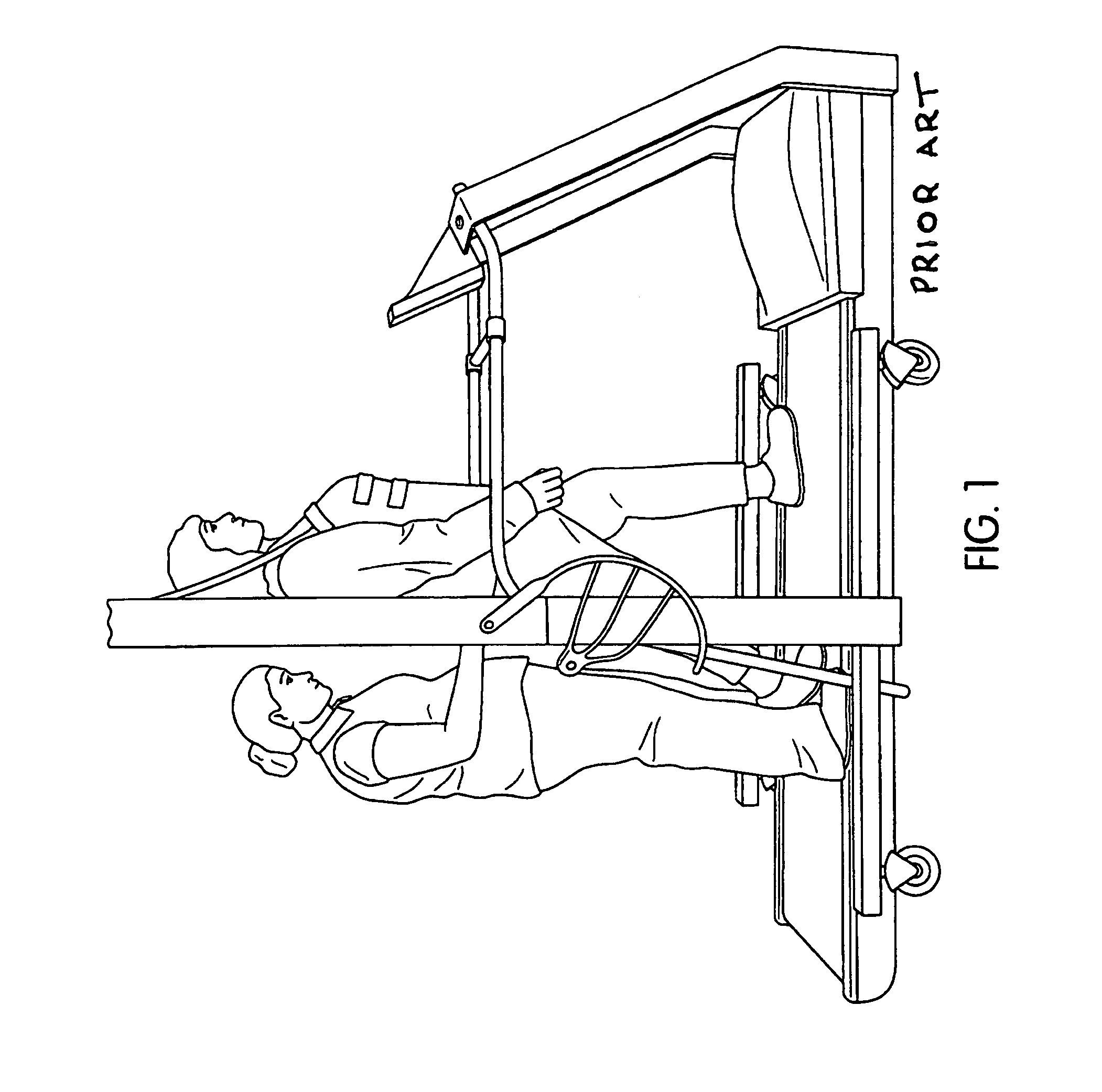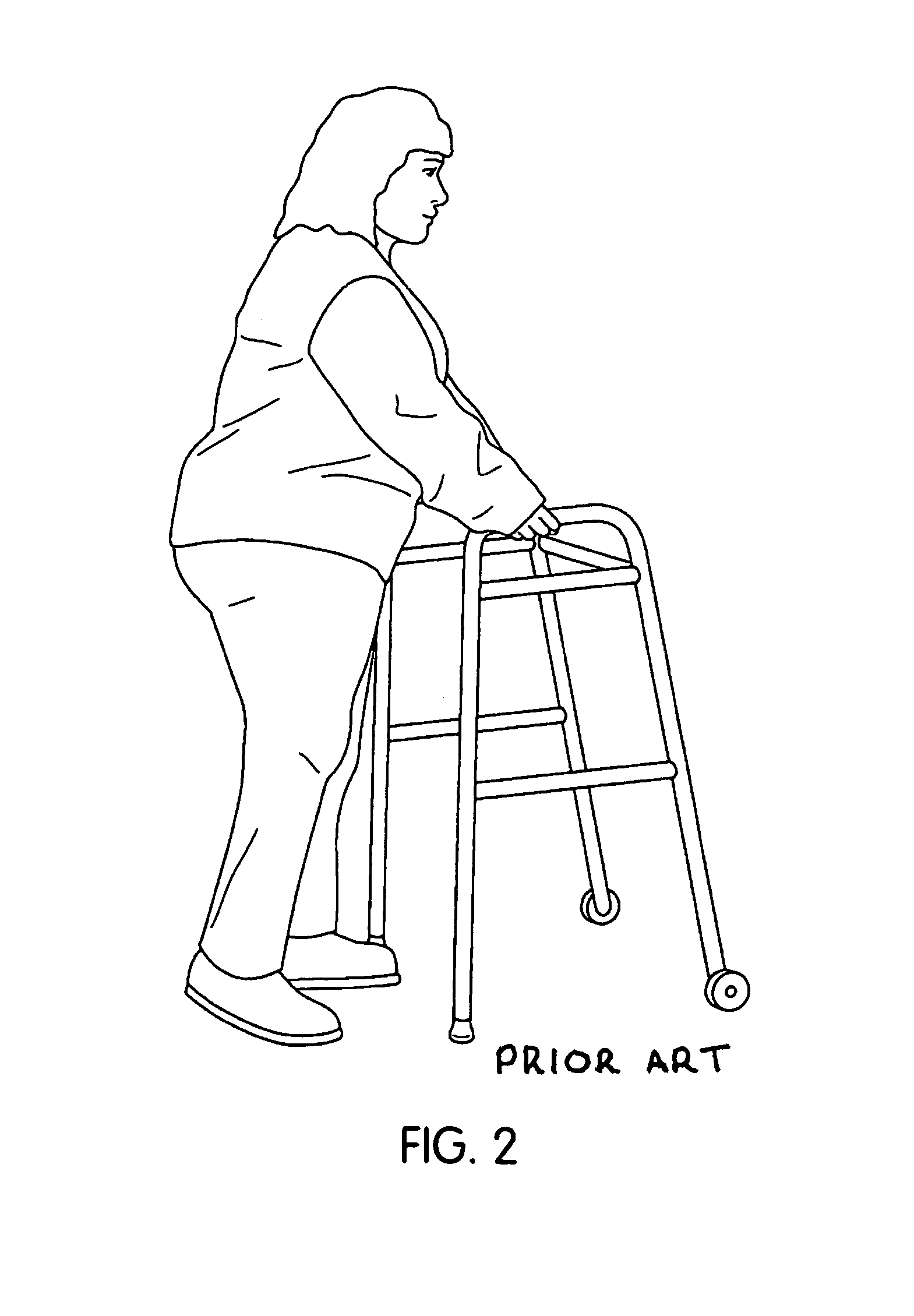Assistive ambulatory device
a technology of assistive devices and ambulatory devices, which is applied in the direction of cardiovascular exercise devices, sport apparatus, gymnastic exercise, etc., can solve the problems of not being able to allow the roll type of ambulatory assistive devices may not allow for natural hip extension, and the rollator cannot permit the type of reciprocal arm swing, etc., to minimize the abnormal kinematics of the lower extremities, minimize the weight bearing on the arm
- Summary
- Abstract
- Description
- Claims
- Application Information
AI Technical Summary
Benefits of technology
Problems solved by technology
Method used
Image
Examples
Embodiment Construction
[0025]This disclosure describes an innovative, instrumented ambulatory assistive device called the natural gait walker illustrated in FIG. 3, that may allow for better incorporation of the guiding locomotive training principles while training and walking and that may lead to improved walking ability. The novel features of this ambulatory assistive device allow the user and therapist to effectively address the guiding principles of locomotor training, as noted above, when training and walking over level surfaces and in the community.
[0026]Key features of the proposed natural gait walker include:[0027]User is positioned in the middle of the walker to allow for upright trunk, minimizing abnormal LE kinematics and weight bearing on arms;[0028]Hinged corners with adjustable friction allow for reciprocal arm swing when unlocked;[0029]Four wheels permit continuous stepping motion that does not disrupt normal gait kinematics;[0030]Height adjustable to allow the therapist to set an optimal h...
PUM
 Login to View More
Login to View More Abstract
Description
Claims
Application Information
 Login to View More
Login to View More - R&D
- Intellectual Property
- Life Sciences
- Materials
- Tech Scout
- Unparalleled Data Quality
- Higher Quality Content
- 60% Fewer Hallucinations
Browse by: Latest US Patents, China's latest patents, Technical Efficacy Thesaurus, Application Domain, Technology Topic, Popular Technical Reports.
© 2025 PatSnap. All rights reserved.Legal|Privacy policy|Modern Slavery Act Transparency Statement|Sitemap|About US| Contact US: help@patsnap.com



